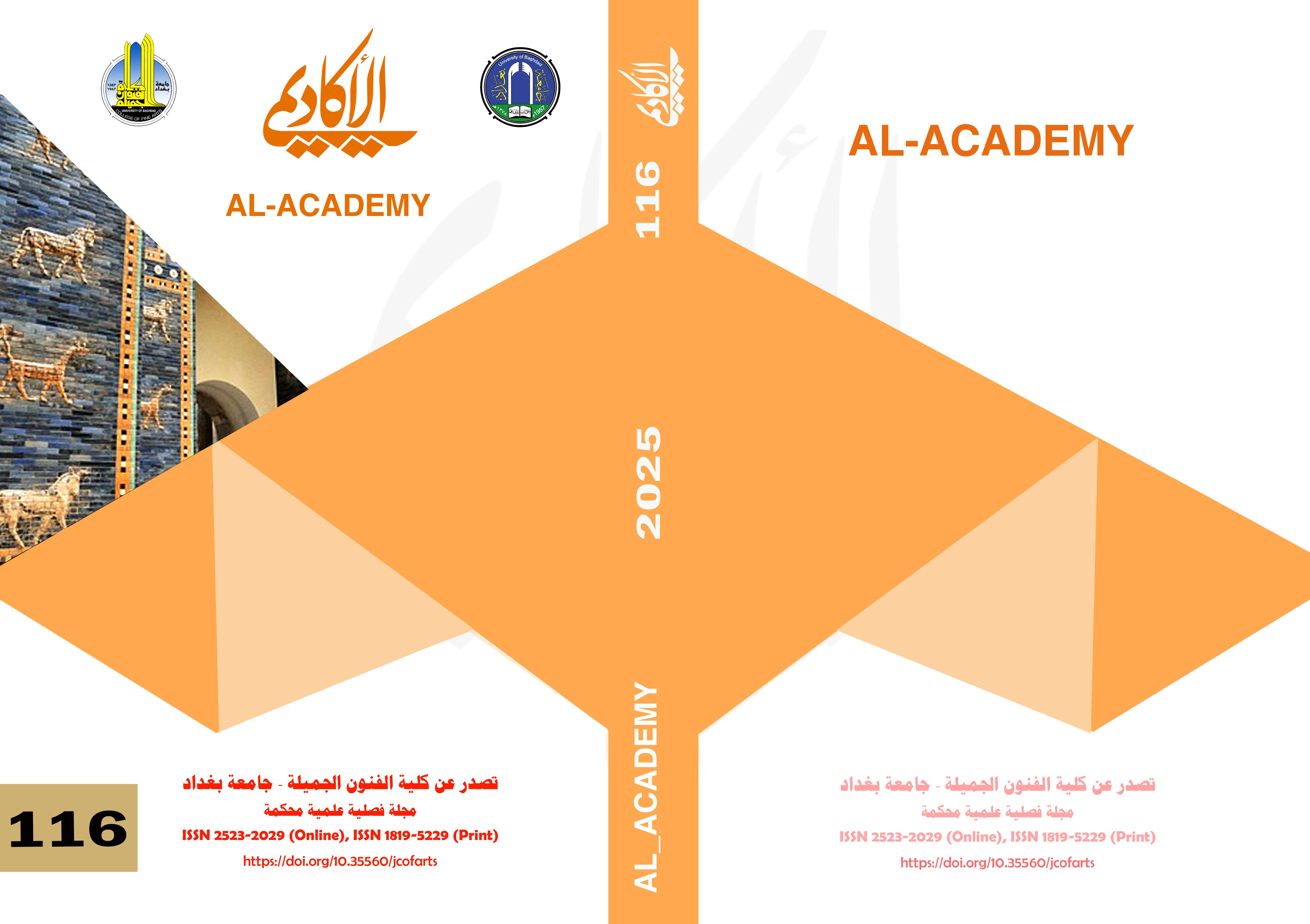"الإبداع الخزفي: استراتيجيات تصميم الهدايا التذكارية لتعزيز الهوية الثقافية الوطنية"
DOI:
https://doi.org/10.35560/jcofarts1600الكلمات المفتاحية:
الابتكار الخزفي في التذكارات، الهوية الثقافية الوطنية، دمج التراث والحداثة، تصميم الخزف المعاصرالملخص
يتناول هذا البحث الإبداع الخزفي ودوره في تصميم هدايا تذكارية تعزز الهوية الثقافية الوطنية، من خلال دمج العناصر التراثية مع الابتكار المعاصر. تم تصميم ست مجموعات من المنتجات الخزفية (بما في ذلك مبخرة ومزهرية وأطباق زينة) باستخدام زخارف القط العسيري والخط العربي كرموز ثقافية أصيلة. لجمع البيانات، تم تقييم التصميمات بواسطة 23 خبيراً متخصصاً باستخدام استبانة تقيس الجمالية، والابتكار، والرمزية الثقافية، والوظيفية، ومدى تنافسية التصاميم في السوق. أشارت النتائج إلى قبول واسع للتصميمات التي نجحت في دمج التقليد مع الحداثة، حيث سجلت درجات مرتفعة خاصة في الابتكار والرمزية. توصل البحث إلى أهمية تعزيز التكامل بين التراث والابتكار في التصميم الخزفي، مما يسهم في تعزيز الهوية الثقافية الوطنية وتطوير منتجات قادرة على المنافسة محلياً وعالمياً. تقترح الدراسة إجراء المزيد من البحوث وتطوير استراتيجيات تسويقية لتعظيم أثر هذه التصميمات.
المراجع
Abdullah, F. (2018). The role of art and design in building cultural identity in the modern era. Journal of Arab Studies, 7(2), 112-129.
Achille, C. (2022). No TitleTeaching and Learning of Cultural Heritage : Engaging Education , Professional Training , and Experimental Activities (pp. 65–93).
Al-Najjar, M. (2014). Cultural heritage and identity in the Arab world: An exploration of cultural memory. (Al-Ahram P).
Alghamdi, S., & Al-Sulami, A. (2021). Heritage and Innovation: Saudi Arabia’s Design Identity Under Vision 2030. Middle East Journal of Cultural Studies, 8(3), 120–135.
Bianchini, M., & Maffei, S. (2020). Designing for Cultural Identity in a Globalized World. Design Issues, 36(1), 25–37.
Cummings, J., & Lewandowski, S. (2021). Cultural Heritage and Modern Design: Balancing Authenticity and Innovation. Journal of Design Studies, 43(2), 145–160.
Dunn, A., & Goodman, M. (2014). Design and craft: The importance of tradition and innovation in contemporary ceramics. Journal of Craft and Design, 15(2), 45–59.
El-Sayed, A. (2021). Fashion and Cultural Identity: The Evolution of the Galabeya in Egyptian Tourism. Journal of Design & Culture., 4(1), 375.
El-Shahat, R. (2022). Ancient Egyptian Motifs in Contemporary Souvenirs. Tourism Review., 4(2), 136–150.
Fang, M., & Chen, H. (2021). Research on application of ceramic materials in public art environment. IOP Conference Series: Earth and Environmental Science, 632(5). https://doi.org/10.1088/1755-1315/632/5/052028
Global Design Institute. (2022). Cultural Identity in Global Markets.
He, Y. (2022). Research on Innovative Thinking of Ceramic Art Design Based on Artificial Intelligence. Mobile Information Systems, 2022. https://doi.org/10.1155/2022/3381042
Lidwell, W. (2020). Scandinavian Design Principles: Harmony Between Culture and Functionality. Scandinavian Journal of Art & Design, 28(2), 89–102.
Miller, J. (2010). Ceramics and cultural identity: A historical and theoretical approach. (Routledge.).
Moulin, J. (2018). Globalizing traditional crafts: The role of design in cultural communication. Journal of Design History, 31(3), 120-133.
Mwangi, J., & Ogutu, L. (2021). Sustainable Craft Tourism in Kenya: Challenges and Innovations. Journal of Sustainable Tourism, 4(3), 233–250.
Reynolds, P. (2012). Ceramics as communication: The role of crafts in the global marketplace. Craft Studies Review, 18(1), 22-34.
UNESCO. (2019). Heritage and creativity: Perspectives for cultural and economic development.
Vickers, L. (2015). The craft revival and modern design: Intersections of tradition and innovation. Craft and Design Journal, 22(4), 18-30.
التنزيلات
منشور
إصدار
القسم
الرخصة
الحقوق الفكرية (c) 2025 Maha Amin Khayat

هذا العمل مرخص بموجب Creative Commons Attribution 4.0 International License.













